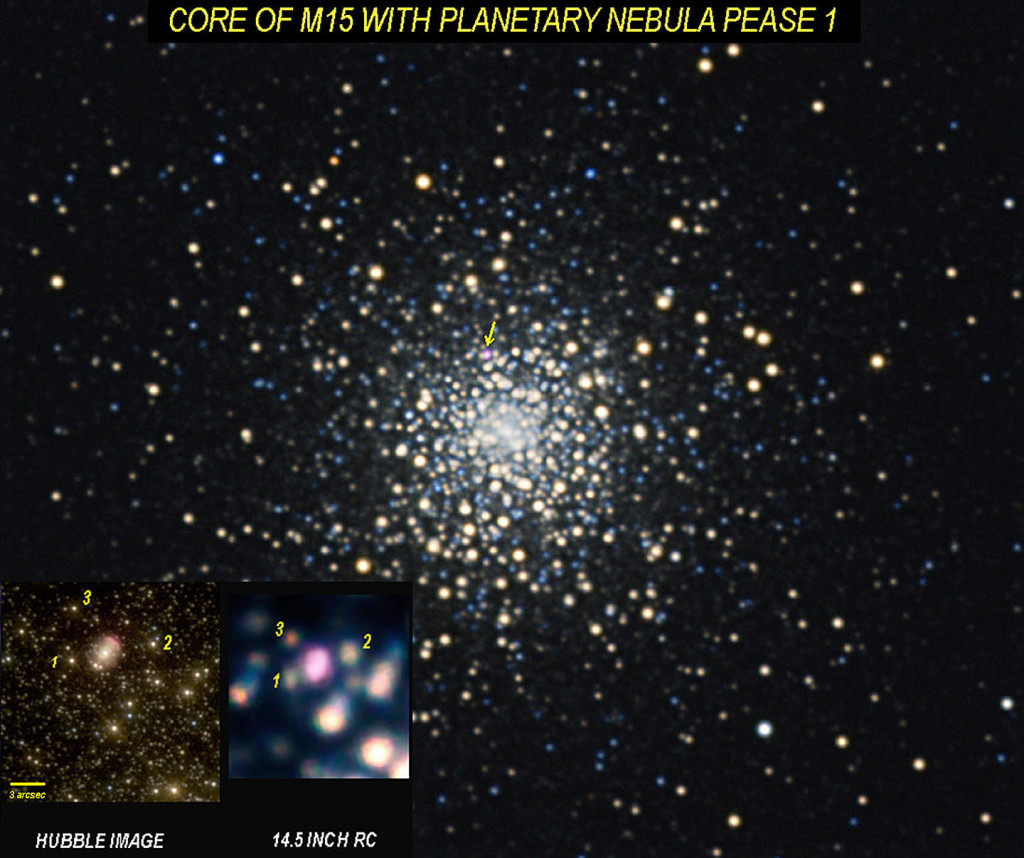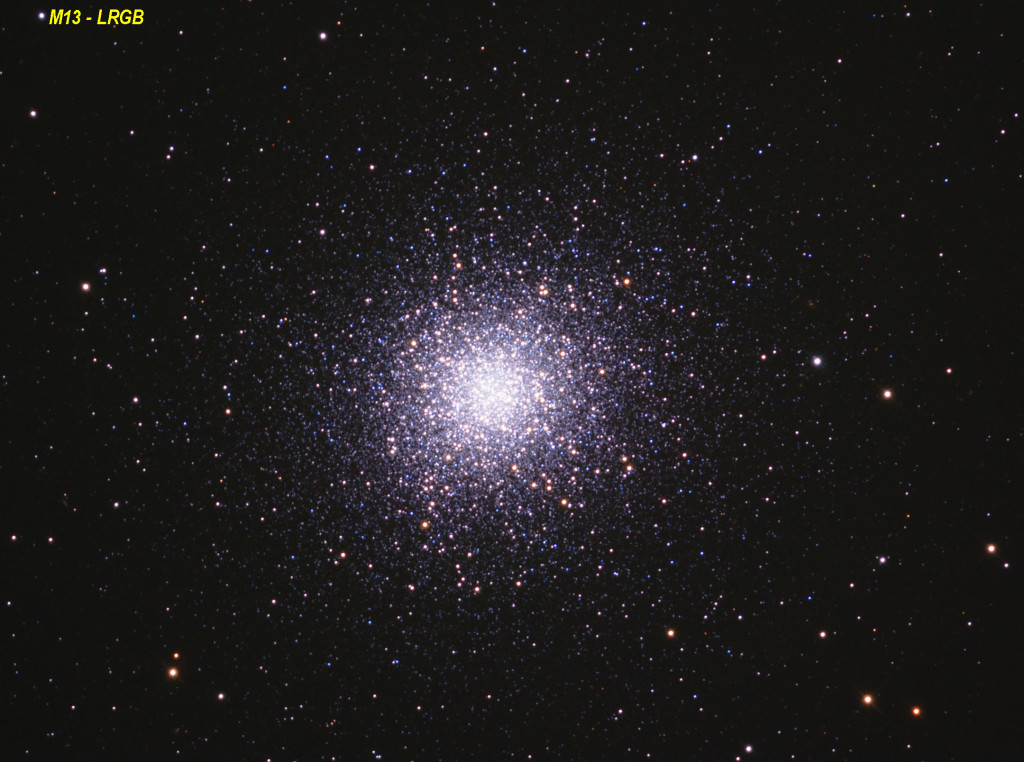Barry Riu is a maverick at hunting down and imaging exotic objects using his 5-inch Tak refractor and CCD camera. Recently, he imaged gravitational lensing in Einstein’s Cross (PGC69457 in Pegasus) and ferreted out galactic cirrus vs. supernova remnant in Bootes while capturing colliding Arp galaxies. So, I was not surprised when Barry suggested I chase one of only four known planetary nebulae (PN) within globular clusters (GC), specifically PN Pease1 in GC M15 in Pegasus. This tiny planetary nebulae is only about three arc seconds in diameter and is deeply embedded within the exceptionally dense star core of globular cluster M15. I violated this planetary despite “core collapse” phenomenon occurring in M15 (see M15 wiki link below). I included the second image above, a GC M13 image showing the whole cluster for comparison (not just a core); furthermore, M13 does not show core collapse (brightening condensation).
To violate this planetary neb, I took a series of 120 second exposures at 1X1 binning with red, green and blue filters on the RC as well as five – 15 minute 1X1 binned exposures using a 6nm bandpass H-alpha filter. The RGB exposures show a tiny bluish Pease1 nebula among the M15 core stars but the H-alpha image differentially separates the nebulae nicely. In Photoshop, I layered a HaGB image on top of an RGB image “painting” through the Ha data-only onto the color balanced RGB image. (A straight HaGB image shows the planetary nebula red but all the other globular cluster stars as variations of green and blue – not very aesthetic). This image also shows an inset of Pease 1 both taken with the Hubble Space Telescope and the 14.5 inch Chiefland RC. In hindsight, I may re-shoot this object using shorter exposures for the red channel and using my ST-10 camera on the RC which has smaller pixels (6.8 microns) to reduce the red giant (yellow) star sizes on my image. Nevertheless, Pease 1 is easily identified on this image and is even separated from the adjacent stars of the cluster!
There are only four known planetary nebulae residing within globular clusters, of which Pease 1 within M15 is the easiest to detect at CAV since M15 gets 72 deg high! The three others are all quite far south in Sagittarius (GJJC1 in M22), Ophiuchus (JaFu1 in Palomar 6), and Scorpius (JaFu2 in NGC 6441). GJJC1 is a three arc second planetary nebulae at 15th magnitude one minute south of bright GC M22 core at dec. -23 placing it at best at 36 deg up at CAV! This will likely be my next planetary neb in globular cluster target to violate. The JaFu1 at 16th magnitude and at 8 arc seconds diameter lies on the outer fringes of small globular cluster Palomar 6 near Lagoon Nebula at declination –26 (34 deg max). JaFu2 is hidden within the stars of NGC6441 at declination –37 and is probably too low in the sky (23 deg max) for a realistic attempt. Apparently, there are no known planetary nebulae within the confines of open clusters (NGC2438 is superimposed on M46).
http://en.wikipedia.org/wiki/Messier_15 — M15 Core Collapse – Wikipedia!

